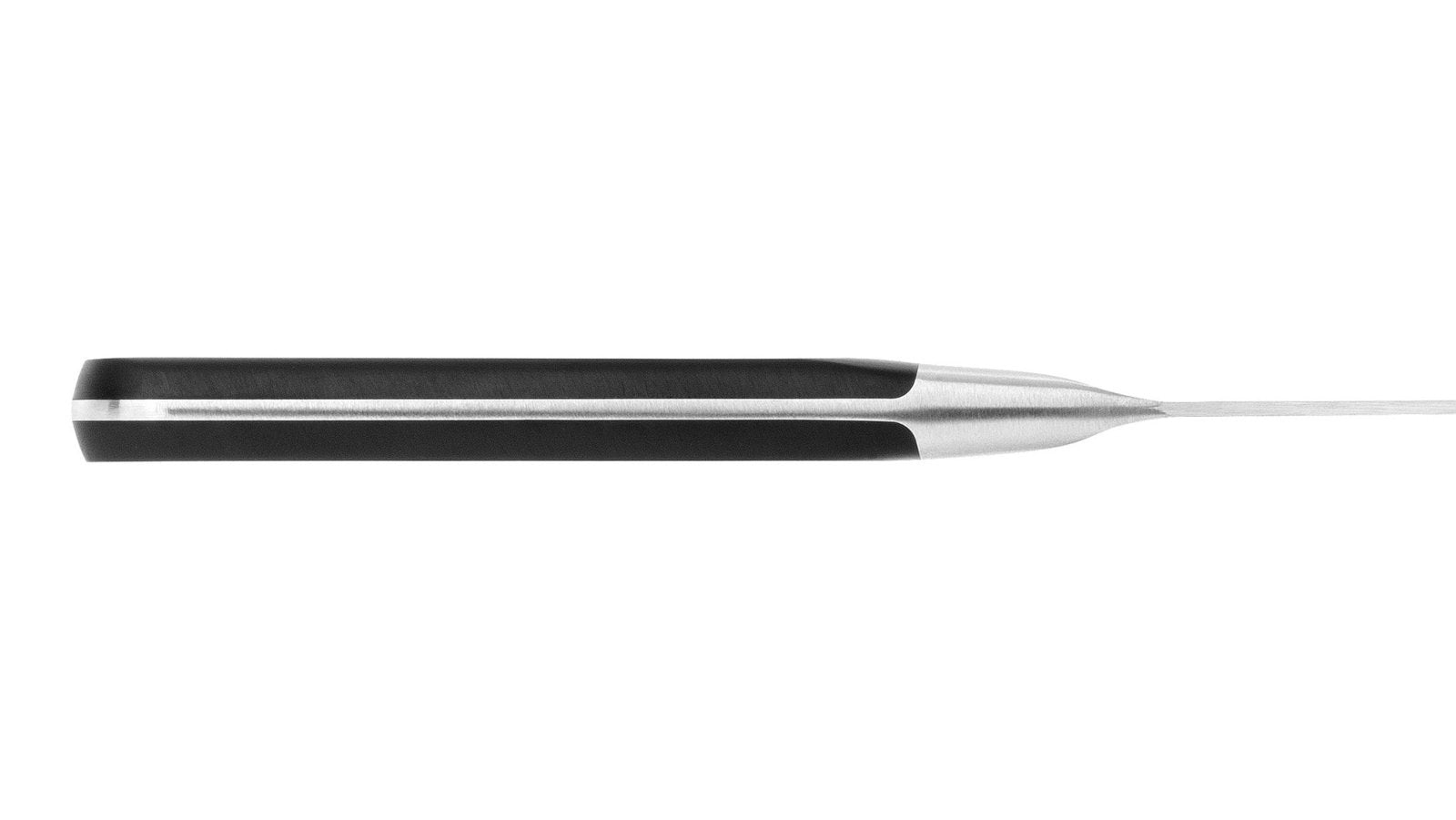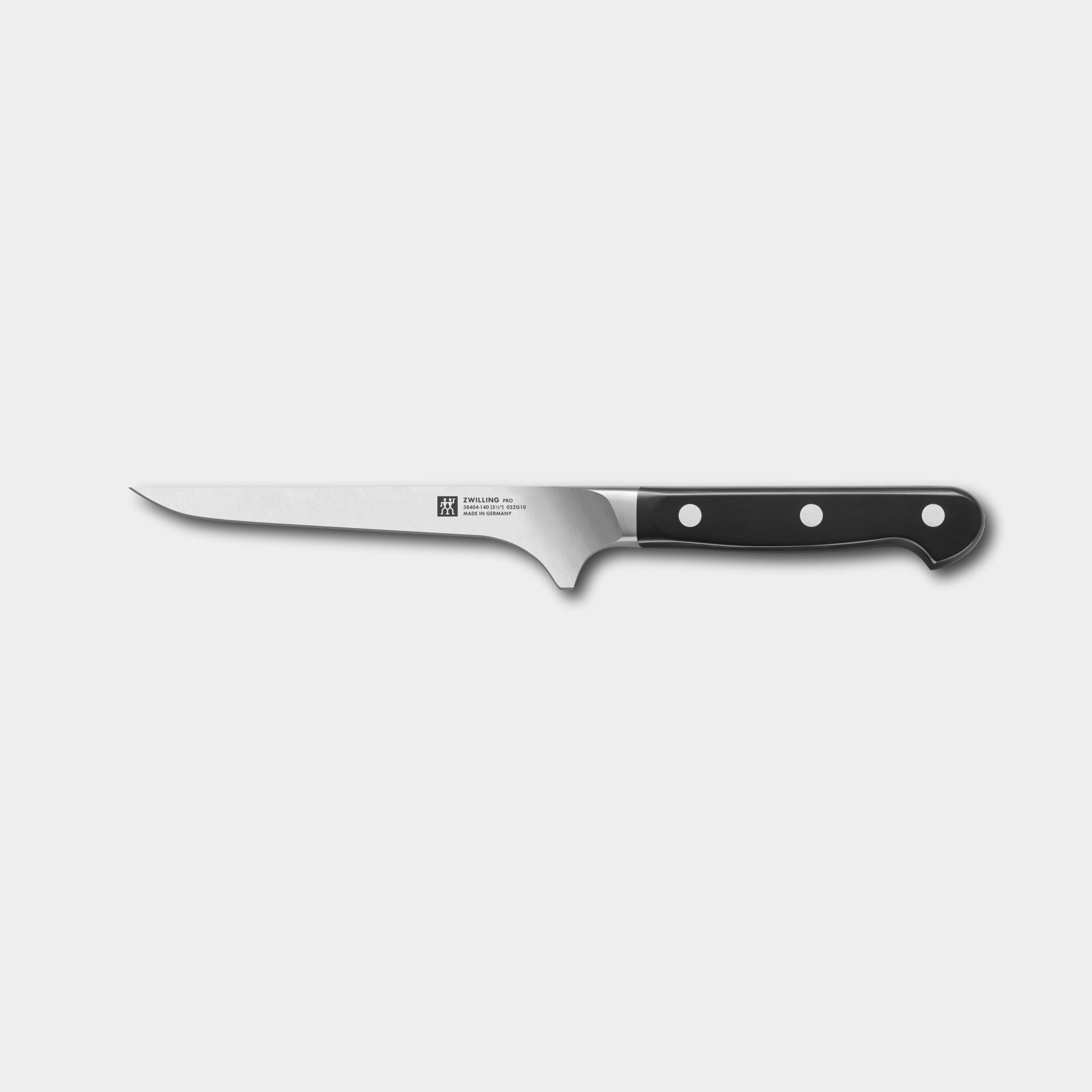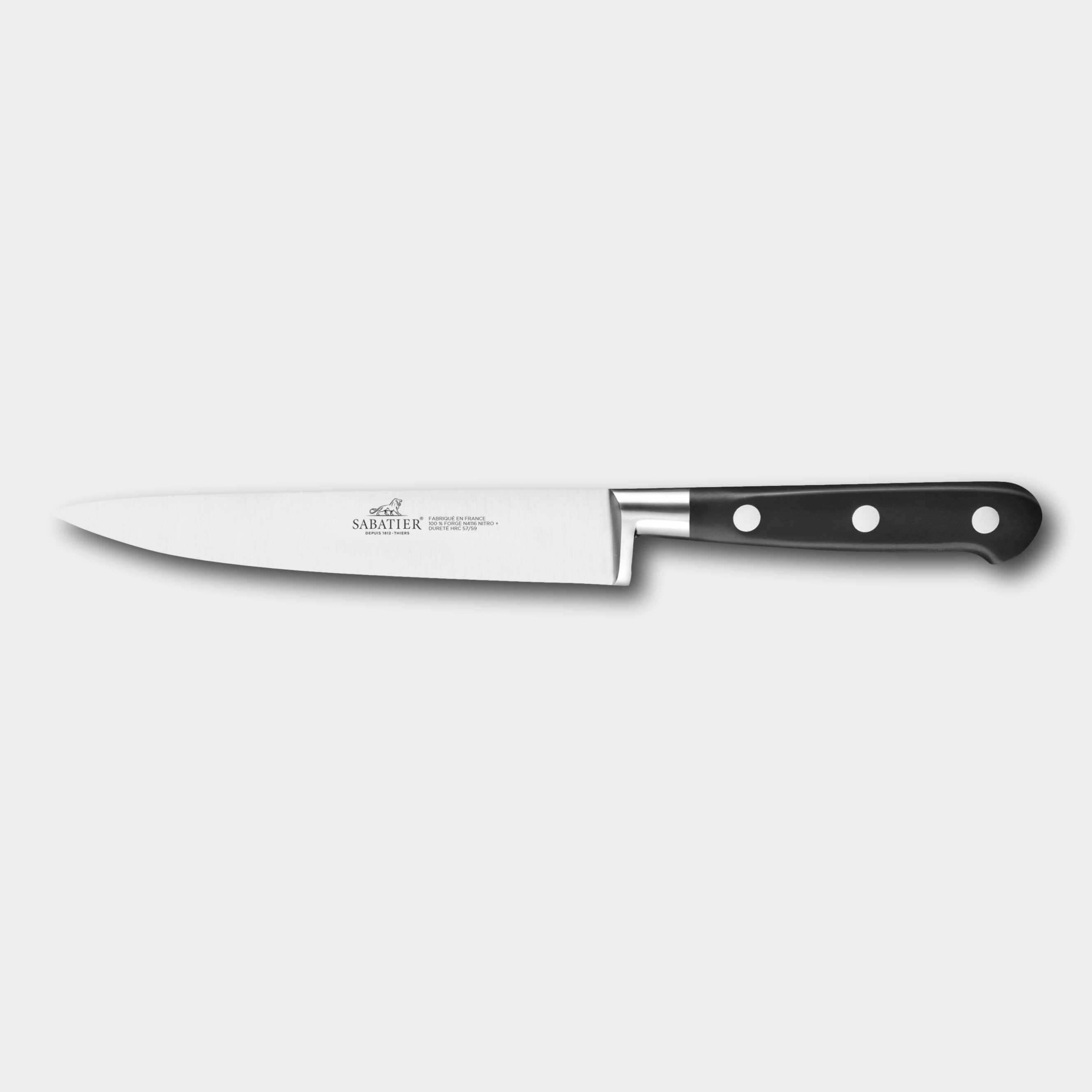
Filleting & Boning Knives
Precision Tools for Fish and Meat Preparation
At The Cotswold Knife Company, we offer a wide selection of filleting and boning knives from top brands like Robert Welch, Wüsthof, Zwilling, Kai, and more. Having the right knife can drastically improve the efficiency and safety of your prep work, whether you're handling delicate fish fillets or deboning a cut of meat. Filleting knives are ideal for detailed tasks, offering the flexibility to follow the contours of bones and the finesse to remove skin without tearing. Boning knives, however, tend to have less flexible and thicker blades, giving you more control so you are able to cleanly separate meat from joints and bones in larger cuts. With our selection, you’ll find everything from lightweight filleting tools to robust boning knives, ensuring you're well-equipped for any preparation challenge in the kitchen.
- Renowned Brands:Featuring top names like Robert Welch, Wüsthof, Zwilling, Kai, and more.
- Express Delivery: If ordered before 2 pm we will dispatch it the same working day. Express delivery is available at the checkout.
- UK Support Talk to us, not a robot, we can advise and process your order over the phone
FAQs
A filleting knife is a specialised tool designed primarily for tasks involving fish, but it can be used for a range of delicate and precise cutting jobs. Here are some of the main tasks a filleting knife can be used for:
- Filleting Fish: Its primary purpose is to remove the flesh from the bones of fish. The long, narrow, and flexible blade allows for precision cuts close to the bone, ensuring minimal waste and clean, smooth fillets.
- Skinning Fish: The thin and flexible blade of a filleting knife makes it ideal for separating the skin from the flesh of the fish without damaging the meat.
- Deboning Meat and Poultry: While not as sturdy as a boning knife, a filleting knife can be used to debone smaller cuts of meat or poultry, particularly when working around delicate bones.
- Slicing Thin Cuts of Meat: The flexibility of the blade is useful for making thin, precise slices of meat, which can be helpful for dishes like carpaccio or for cutting delicate meats like veal.
- Trimming Fat and Silver Skin: The filleting knife’s narrow blade is perfect for trimming fat or removing the silver skin from meats, as it allows for very precise cuts without taking off too much meat.
- Peeling and Trimming Fruits and Vegetables: While not its main use, the precision of a filleting knife makes it suitable for peeling and trimming small fruits or vegetables that require a delicate touch.
Whilst a filleting knife is designed and most commonly used for the tasks above it can also be used for:
- Butterflying Shrimp or Chicken: The thin, flexible blade can make precise cuts needed to butterfly shrimp or chicken breasts, allowing for more even cooking.
- Slicing Delicate Pastries: Its sharp, flexible blade can be useful for cutting through soft, delicate pastries without crushing them, particularly where precision is important.
- Trimming Dough: If you're working with dough, the sharpness and flexibility of the filleting knife can allow you to cut and trim edges without dragging or tearing the dough, though it’s not as commonly used as a pastry cutter.
- Shaving Chocolate or Parmesan: The thin, sharp blade can be used to make thin shavings of chocolate or Parmesan cheese for garnishing dishes or desserts.
- Removing Seeds from Peppers or Tomatoes: The narrow blade can be helpful in carefully removing seeds from inside vegetables like bell peppers or tomatoes, similar to a paring knife.
- Cutting Sushi Rolls: The filleting knife’s sharp, thin blade can be used to cut sushi rolls cleanly without squishing the rice or fillings, which requires a very sharp blade.
- Segmenting Citrus Fruits: If you don’t have a paring knife handy, a filleting knife can be used to segment oranges or other citrus fruits, helping to remove the pith and peel in thin, precise layers.
Maintaining your knives involves several essential practices to ensure they stay sharp, durable, and in top condition:
- Cleaning: Always wash your knives by hand with warm water and mild detergent immediately after use. It's important to avoid using the dishwasher, as the harsh environment can damage both the blade and the handle over time. After washing, dry the knives completely with a soft cloth to prevent any rust formation.
- Honing: Regular honing is key to keeping your knives sharp and maintaining their edge. Use a honing steel before or after each use to realign the blade's edge. Hold the steel vertically and gently slide the knife down and across the steel at a 20-degree angle.
- Sharpening: In addition to regular honing, your knives will need periodic sharpening, typically once or twice a year depending on how frequently you use them. You can sharpen your knives using a whetstone, a handheld sharpener, or opt for professional sharpening services.
- Storage: Proper storage is crucial for the longevity of your knives. Store your knives in a knife block, on a magnetic strip, or within protective sheaths. This not only prevents the blades from dulling but also helps avoid accidents. Storing knives in a drawer is not recommended, as they can easily get damaged.
- Cutting Surface: To maintain the sharpness of your knife edges, always use wooden or plastic cutting boards. Cutting on hard surfaces like glass, metal, or stone can quickly dull your knives.
- Avoid Misuse: Remember that these knives are specifically designed for cutting food. Avoid using them for any non-food related tasks, as this can damage the blade.
- Handle with Care: Always be mindful of the knife's balance and handle it with care. Avoid dropping or carelessly tossing your knives, as this can lead to damage to both the blade and the handle.
Shop at Cotswold Knife Company with confidence, knowing we are a verified stockist of all the knives we stock.




























